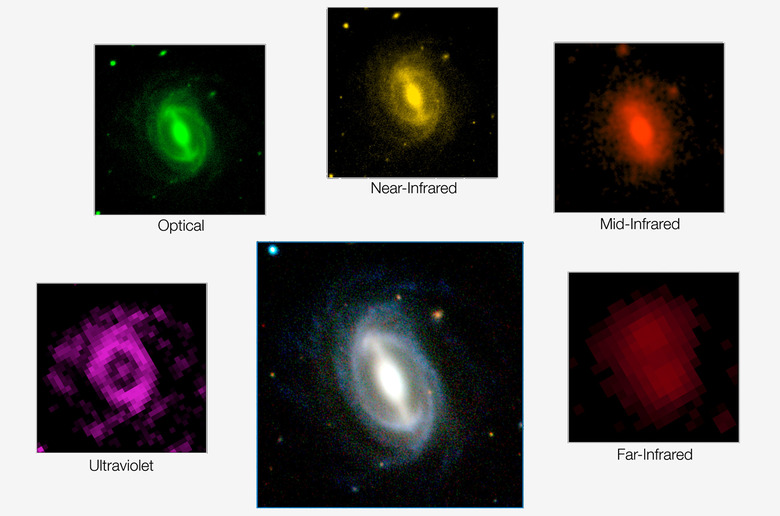The Universe Is Dying - Across All Wavelengths
While it's been widely accepted that the Universe is slowly fading since the late 1990s, a study published today shows the great extent to which its death is occurring. "The Universe has basically sat down on the soft, pulled up a blanket, and is about to nod off for an eternal doze," suggested Simon Driver of ICRAR, lead author on the study. Measurements of energy output of each of 200,000 galaxies has been done at 21 wavelengths, from far infrared back down to ultraviolet. As broad a wavelength range as possible was studied by researchers who've now concluded that, yes, the Universe is indeed fading out.
This research was done as part of the largest multi-wavelength study ever created: the Galaxy And Mass Assembly (GAMA) project. While the dataset put together so far will help scientists further understand the genesis of galaxies of all sorts, the conclusion first and foremost is that the energy produced in their studied section of the universe is "only about half" of what it was around 2-billion years ago.

ABOVE: This composite picture shows how a typical galaxy appears at different wavelengths in the GAMA survey. CREDIT: ICRAR/GAMA and ESO
"While most of the energy sloshing around in the Universe arose in the aftermath of the Big Bang," said Driver, "additional energy is constantly being generated by stars as they fuse elements like hydrogen and helium together."
"This new energy is either absorbed by dust as it travels through the host galaxy, or escapes into intergalactic space and travels until it hits something, such as another star, a planet, or, very occasionally, a telescope mirror."
ABOVE: The Galaxy and Mass Assembly catalogue is a detailed map of the Universe showing where galaxies are in 3D. This simulated fly-through shows the real positions and images of the galaxies that have been mapped so far. Distances are to scale, but the galaxy images have been enlarged for your viewing pleasure. CREDIT: Made by Will Parr, Dr. Mark Swinbank and Dr. Peder Norberg (Durham University) using data from the SDSS and the GAMA surveys. This work was supported by the Ogden Trust, STFC and the Royal Society. Music composed and created by Holly Broadbent
This study was done with several of the most powerful telescopes from around the world, both on the surface of our planet and up in our planet's orbit. Included were NASA's GALEX and WISE telescopes and the ESA's Herschel, all in orbit around Earth. On the ground were the ESO's VISTA (pictured below, courtesy of the ESA) and VST survey telescopes housed at the Paranal Observatory in Chile.

A new telescope is being built right this minute which the team hopes to use to continue their studies. This is the the Square Kolometre Array, a telescope being built in Australia and South Africa over the next 10 years, set to be the world's largest radio telescope when completed.
You can learn more in the ESO-published paper "Galaxy And Mass Assembly (GAMA): Panchromatic Data Release (far-UV—far-IR) and the low-z energy budget" by authors Simon P. Driver, Angus H. Wright, Stephen K. Andrews, and a whole lot more. This paper can be found with the ESO through eso1533 — Organization Release.
